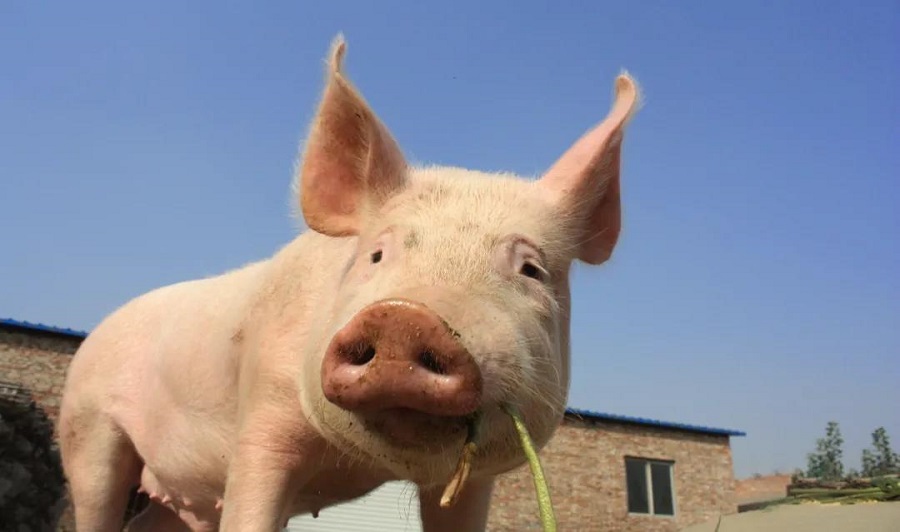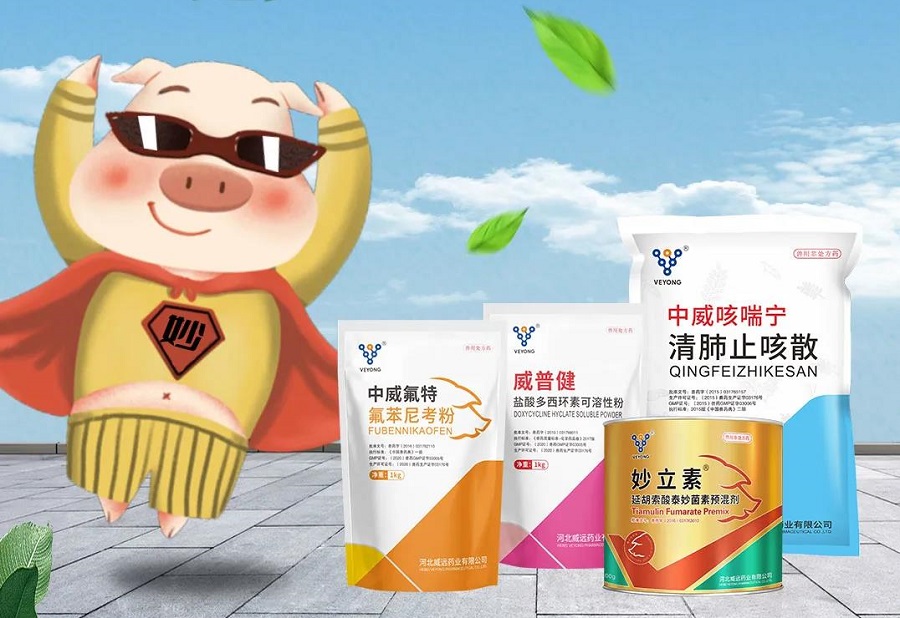Why should we focus on respiratory health in winter?
Winter has arrived, cold waves are coming, and the stress is constant. In a closed environment, poor air flow, accumulation of harmful gases, close contact between pigs and pigs, respiratory diseases have become commonplace.
Respiratory diseases involve more than ten kinds of pathogenic factors, and the cause of one case is complicated. The main symptoms are cough, wheezing, weight loss, and abdominal breathing. The fattening pig herd has reduced feed intake, hindered growth and development, and the mortality rate is not high, but it brings huge losses to the pig farm.
What is Mycoplasma hyopneumoniae?
Mycoplasma hyopneumoniae, as one of the important primary pathogens of swine respiratory diseases, is also regarded as the “key” pathogen of respiratory diseases. Mycoplasma is a special pathogen between viruses and bacteria. Its structural composition is similar to that of bacteria, but it lacks cell walls. A variety of antibiotics against cell walls have little effect on it. The disease has no seasonality, but under various inducements , It is easy to develop synergistically with other pathogens.
The source of infection is mainly sick pigs and pigs with bacteria, and its transmission routes include respiratory transmission, direct contact transmission and droplet transmission. The incubation period is about 6 weeks, that is, pigs that become ill during the nursery may have been infected as early as the early lactation. Therefore, the focus of the prevention and control of Mycoplasma pneumoniae is to prevent it as early as possible.
The prevention and control of mycoplasma pneumonia mainly starts from the following aspects:
Pay attention to nutrition and improve the environment;
Pay attention to the concentration of ammonia in the environment (addition of Aura to the feed can enhance the absorption of nutrients and reduce the level of crude protein in the feces) and air humidity, pay attention to heat preservation and ventilation; in some pig farms with poor hardware conditions, the ceiling must be installed Unpowered fan; control the stocking density, implement the all-in and all-out system, and strictly do the disinfection work.
Pathogen purification, drug prevention and control;
1) Respiratory disease in pig farms is in commercial pigs, but maternal transmission is the most important. Purifying sow mycoplasma and treating both symptoms and root causes can achieve a multiplier effect with half the effort. Veyong Yinqiaosan 1000g + Veyong Tiamulin Hydrogen Fumarate soluble powder 125g + Veyong Doxycycline powder 1000g + Veyong vitamins powder 500g Mix 1 ton for continuous use for 7 days (Tiamulin fumarate combined with doxycycline or oxytetracycline and other tetracycline antibiotics After use, it can increase its antibacterial activity by 2-8 times);
2) To enhance the purification of mycoplasma in the environment, spray the Veyong Tiamulin Hydrogen Fumarate solution (50g Tiamulin Hydrogen Fumarate soluble powder with 300 catties of water) with an atomizer;
3) Purification of pre-mycoplasma of piglets during lactation (3, 7 and 21 days of age, three times of nasal spray, 250ml of water mixed with 1g of Myolis).
Find the right time and use the right plan;
Respiratory tract is the most important problem for pigs weighing 30 catties to 150 catties. It should be prevented and treated early. It is recommended to use the Veyong Breathing Solution, Veyong Moistening Lung Cough relieving powder 3000g + Veyong Tiamulin Hydrogen Fumarate soluble powder 150g + Veyong Florfenicol powder 1000g + Veyong Doxycycline powder 1000g , Mixing 1ton feed can be used continuously for 7 days.
The value of preventing and controlling mycoplasma pneumonia
1.The feed utilization rate is increased by 20-25%, the feed remuneration is increased, and the average feed consumption is reduced by 0.1-0.2kg per kg of weight gain.
2.The daily weight gain is 2.5-16%, and the fattening period is shortened by an average of 7-14 days, which reduces the risk of major diseases.
3.Reduce the probability of secondary infection of blue-ear virus and other pathogens, reduce lung disease and injury, and increase the comprehensive income of slaughter.
Post time: Nov-19-2021



.png)
.png)
.png)
.png)